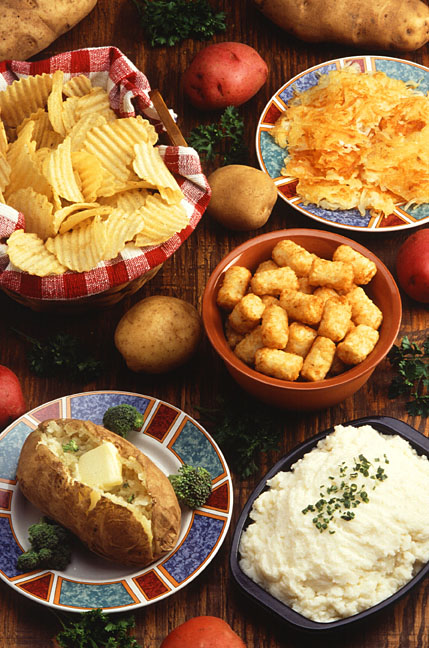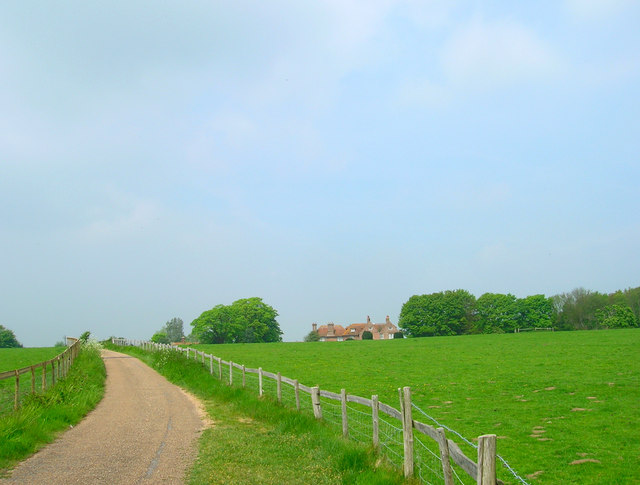|
Lyonnaise Potatoes
Lyonnaise potatoes – in French pommes de terre sautées à la lyonnaise – are potatoes, boiled and then sliced and shallow-fried, served together with fried onions. History and ingredients The culinary term ''à la lyonnaise'' – in the style of Lyon – which is applied to numerous French dishes, generally means that onions are a key part of the recipe. Potatoes ''à la lyonnaise'' are sautéed and served with fried onions. All five recipes mentioned below, dating from 1806 to 1970, call for the potatoes to be boiled, peeled and sliced, before frying. André Viard, in '' Le Cuisinier impérial'' (1806), stipulates that the potatoes are to be sliced and covered with onion purée before being fried in butter and served with sliced onions that have been gently simmered in water. By the mid-19th century, recipes specified that the onions, as well as the potatoes, should be fried. In Alexis Soyer's recipe (1846) the onions are fried in butter and the sliced boiled potatoes ... [...More Info...] [...Related Items...] OR: [Wikipedia] [Google] [Baidu] |
Lyon
Lyon,, ; Occitan: ''Lion'', hist. ''Lionés'' also spelled in English as Lyons, is the third-largest city and second-largest metropolitan area of France. It is located at the confluence of the rivers Rhône and Saône, to the northwest of the French Alps, southeast of Paris, north of Marseille, southwest of Geneva, northeast of Saint-Étienne. The City of Lyon proper had a population of 522,969 in 2019 within its small municipal territory of , but together with its suburbs and exurbs the Lyon metropolitan area had a population of 2,280,845 that same year, the second most populated in France. Lyon and 58 suburban municipalities have formed since 2015 the Metropolis of Lyon, a directly elected metropolitan authority now in charge of most urban issues, with a population of 1,411,571 in 2019. Lyon is the prefecture of the Auvergne-Rhône-Alpes region and seat of the Departmental Council of Rhône (whose jurisdiction, however, no longer extends over the Metropolis of Lyo ... [...More Info...] [...Related Items...] OR: [Wikipedia] [Google] [Baidu] |
Gratin
Gratin () is a culinary technique in which an ingredient is topped with a browned crust, often using breadcrumbs, grated cheese, egg or butter.Courtine, Robert J. (ed.) (2003) ''The Concise Larousse Gastronomique'' London: Hamlyn The term may be applied to any dish made using this method. Gratin is usually prepared in a shallow dish of some kind. A gratin is baked or cooked under an overhead grill or broiler to form a golden crust on top and is often served in its baking dish. A ''gratin dish'' is a shallow oven-proof container used to prepare gratins and similar dishes. Terminology The etymology of gratin is from the French language words ''gratter'', meaning "to scrape" or "to grate" (for example, "scrapings" of bread or cheese), and ''gratiné'', from the transitive verb form of the word for crust or skin. The technique predates the current name, which did not appear in English until 1846 (''OED'', ''s.v.'' "gratin"). In addition to the well-known potato dishes such as ' ... [...More Info...] [...Related Items...] OR: [Wikipedia] [Google] [Baidu] |
Potato Dishes
The potato is a starchy food, a tuber of the plant ''Solanum tuberosum'' and is a root vegetable native to the Americas. The plant is a perennial in the nightshade family Solanaceae. Wild potato species can be found from the southern United States to southern Chile. The potato was originally believed to have been domesticated by Native Americans independently in multiple locations,University of Wisconsin-Madison, ''Finding rewrites the evolutionary history of the origin of potatoes'' (2005/ref> but later genetic studies traced a single origin, in the area of present-day southern Peru and extreme northwestern Bolivia. Potatoes were domesticated there approximately 7,000–10,000 years ago, from a species in the ''Solanum brevicaule'' complex. Lay summary: In the Andes region of South America, where the species is indigenous, some close relatives of the potato are cultivated. Potatoes were introduced to Europe from the Americas by the Spanish in the second half of the 16th ce ... [...More Info...] [...Related Items...] OR: [Wikipedia] [Google] [Baidu] |
Sauce Lyonnaise
Sauce lyonnaise is a compound or small French sauce of demi-glace, white wine, vinegar and onions served with small cuts of meat principally for left-overs.''Larousse Gastronomique'' (1961), Crown Publishers(''Translated from the French, Librairie Larousse, Paris (1938)'') See also * Lyonnaise cuisine * Lyonnaise potatoes Lyonnaise potatoes – in French pommes de terre sautées à la lyonnaise – are potatoes, boiled and then sliced and shallow-fried, served together with fried onions. History and ingredients The culinary term ''à la lyonnaise'' – in the st ... References {{France-cuisine-stub French sauces Cuisine of Lyon ... [...More Info...] [...Related Items...] OR: [Wikipedia] [Google] [Baidu] |
Rappie Pie
Rappie pie is a traditional Acadian dish from southwest Nova Scotia, New-Brunswick and areas of Prince Edward Island. It is sometimes referred to as rapure pie or râpure. Its name is derived from the French ''patates râpées'' meaning 'grated potatoes'. It is a casserole-like dish formed by grating potatoes, then squeezing them through cheesecloth to remove some of the water from the potato solids. The removed liquid is replaced by adding hot broth made from chicken, pork or seafood along with meat and onions, and layering additional grated potatoes over the top. Common meat fillings include beef, chicken, or bar clams. History It is thought that rappie pie has its origins in the Acadian Expulsion, among Acadians who lived out their exile in Massachusetts. This opportunity to meet and interact with other immigrant groups would naturally encourage a sharing of cultural recipes. It may have been German or Swiss immigrants who taught the Acadians their technique for using grated p ... [...More Info...] [...Related Items...] OR: [Wikipedia] [Google] [Baidu] |
List Of Potato Dishes
The potato is a starchy, tuberous crop. It is the world's fourth-largest food crop, following rice, wheat and corn. The annual diet of an average global citizen in the first decade of the 21st century included about of potato. The potato was first domesticated by the Andean civilizations in the region of modern-day southern Peru and extreme northwestern Bolivia between 8000 and 5000 BCE.Office of International Affairs, '' Lost Crops of the Incas: Little-Known Plants of the Andes with Promise for Worldwide Cultivation'' (1989online/ref> It has since spread around the world and has become a staple food, staple crop in many countries. The following is a list of dishes that use potato as a main ingredient. See also * Potato cooking * List of potato cultivars * List of sweet potato dishes * List of vegetable dishes References Bibliography * Buonassisi, Vincenzo (1985)''Il nuovo codice della pasta'' Rizzoli. . {{cuisine Lists of foods by ingredient, Potato Dishes Potato ... [...More Info...] [...Related Items...] OR: [Wikipedia] [Google] [Baidu] |
Lyonnaise Cuisine
Lyonnaise cuisine refers to cooking traditions and practices centering on the area around the French city of LyonKindersley, Dorling (2011)''Ultimate Food Journeys: The World's Best Dishes and Where to Eat Them'' Penguin. p. 49. and historical Lyonnais culinary traditions. In the 16th century, Catherine de Medici brought cooks from Florence to her court and they prepared dishes from agricultural products from many regions of France. This was revolutionary, as it combined the fresh, diverse and indigenous nature of regional produce with the know-how of Florentine cooks. The result was that regional specialities were elevated in status among royalty and nobility. Lyonnaise cuisine became a crossroads of many regional culinary traditions. A surprising variety of ingredients from many nearby places emerged: summer vegetables from farms in Bresse and Charolais, game from the Dombes, lake fish from Savoy, spring fruits and vegetables from Drôme and Ardèche, and wines from Beaujo ... [...More Info...] [...Related Items...] OR: [Wikipedia] [Google] [Baidu] |
Home Fries
Home fries (US, Canada), house fries (US), American fries (US), fried potatoes (UK, Canada and regional US), Bratkartoffeln (German), bistro potatoes (southeastern US), or peasant potatoes are a type of basic potato dish made by pan- or skillet-frying chunked, sliced, wedged or diced potatoes that are sometimes unpeeled and may have been par-cooked by boiling, baking, steaming, or microwaving. They are sometimes served as a substitute for hash browns. Home fries (or fried potatoes) are often paired with onions. In North America, home fries are popular as a breakfast side dish. See also * Bauernfrühstück * German fries * French fries * Hash browns * List of deep fried foods * List of potato dishes * Lyonnaise potatoes * Potatoes O'Brien * Waffle fries French fries (North American English), chips (British English), finger chips (Indian English), french-fried potatoes, or simply fries, are '' batonnet'' or ''allumette''-cut deep-fried potatoes of disputed origin from ... [...More Info...] [...Related Items...] OR: [Wikipedia] [Google] [Baidu] |
Dripping
Dripping, also known usually as beef dripping or, more rarely, as pork dripping, is an animal fat produced from the fatty or otherwise unusable parts of cow or pig carcasses. It is similar to lard, tallow and schmaltz. History It is used for cooking, especially in British cuisine, significantly so in the Midlands and Northern England, though towards the end of the 20th century dripping fell out of favour due to it being regarded as less healthy than vegetable oils such as olive or sunflower. Traditionally fish and chips were fried in beef dripping, and while this practice does continue in some places, most shops now use vegetable oils. Preparation is traditionally described as collection of the residue from meat roasts but modern production is from such residue added to boiling water with a generous amount of salt (about 2g per litre). When the stock pot is chilled a solid lump of dripping (the cake) settles. The stock pot should be scraped clean and re-chilled for future use. ... [...More Info...] [...Related Items...] OR: [Wikipedia] [Google] [Baidu] |
Elizabeth David
Elizabeth David CBE (born Elizabeth Gwynne, 26 December 1913 – 22 May 1992) was a British cookery writer. In the mid-20th century she strongly influenced the revitalisation of home cookery in her native country and beyond with articles and books about European cuisines and traditional British dishes. Born to an upper-class family, David rebelled against social norms of the day. In the 1930s she studied art in Paris, became an actress, and ran off with a married man with whom she sailed in a small boat to Italy, where their boat was confiscated. They reached Greece, where they were nearly trapped by the German invasion in 1941, but escaped to Egypt, where they parted. She then worked for the British government, running a library in Cairo. While there she married, but she and her husband separated soon after and subsequently divorced. In 1946 David returned to England, where food rationing imposed during the Second World War remained in force. Dismayed by the contrast betwee ... [...More Info...] [...Related Items...] OR: [Wikipedia] [Google] [Baidu] |
Marcel Boulestin
Xavier Marcel Boulestin (1878 – 20 September 1943) was a French chef, restaurateur, and the author of cookery books that popularised French cuisine in the English-speaking world. Born in Poitiers in France (Poitou region), Boulestin tried a number of occupations before finding his role as a restaurateur. He worked as secretary and ghostwriter to the author "Willy" (Henry Gauthier-Villars) in Paris, and then moved to London, where he made his home and career from 1906 onward. There, he opened an interior design shop, which failed to make enough money. He wrote extensively, and was commissioned to write a simple French cookery book for English readers. It was a huge success, and thereafter his career was in cooking. The Restaurant Boulestin, known as the most expensive in London, opened in 1927. Its fame, and the long series of books and articles that Boulestin wrote, made him a celebrity. His cuisine was wide-ranging, embracing not only the French classics but also dishes fami ... [...More Info...] [...Related Items...] OR: [Wikipedia] [Google] [Baidu] |
.jpg)




.jpg)
